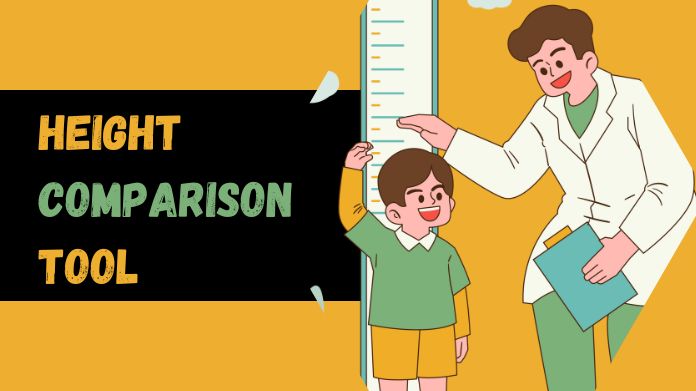The curiosity surrounding family traits often extends to the physical realm, with many individuals eager to explore the heights passed down through generations.
In this guide, we'll delve into the fascinating world of comparing parents and children heights using Height Comparison tool.
These digital resources not only provide a fun and visual way to explore familial stature but also contribute to a broader understanding of genetic influences on physical characteristics.
Before diving into the digital tools, it's essential to recognize the genetic components influencing height.
While genetics play a significant role, environmental factors such as nutrition also contribute to an individual's final height.
Comparing parents and children can provide insights into the interplay of these factors.

Selecting a reliable Height Comparison Tool is the first step in the exploration. Numerous online platforms offer user-friendly tools designed for comparing heights visually.
Opt for a tool that allows input of both parent and child heights in various units of measurement.
Collect accurate height measurements for both parents and children. Ensure consistency in the units of measurement, whether in feet, inches, or centimeters, to facilitate precise comparisons.
Enter the gathered height data into the chosen Height Comparison Tool. Some tools may prompt you to specify whether the comparison involves a mother and child, father and child, or both parents with multiple children.
Upon entering the heights, the tool will generate a visual representation of the parent-child height comparison. This could be presented as a chart, graphic illustration, or a simulated image showcasing the height difference.
Height Comparison Tools can contribute to understanding genetic influences on height. While not a definitive genetic test, observing patterns across different parent-child pairs may provide insights into the hereditary aspects of stature.
It's essential to approach height comparisons within families with sensitivity. Ensure that all individuals involved are comfortable with sharing this information and respect their privacy if they choose not to participate.
Beyond personal curiosity, exploring parent-child height comparisons can have educational value. It becomes an accessible and relatable way to introduce concepts of genetics and heredity, making it an engaging activity for families or in educational settings.
Some advanced Height Comparison Tools may even offer features that predict potential future heights for children based on parental heights.
While these predictions are estimates and not guarantees, they add an intriguing element to the exploration.
Comparing parents and children heights with Height Comparison Tools is a delightful journey into familial traits. It offers not only a visual representation of physical differences but also an opportunity to appreciate the interplay of genetics and environmental factors.
Whether for personal amusement, family bonding, or educational purposes, these tools contribute to a broader understanding of the fascinating world of human stature within the context of family dynamics.
So, if you've ever wondered who you might take after in the family height department, let the Height Comparison Tools unravel the visual story of familial heights for you.